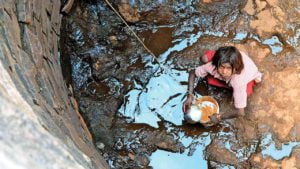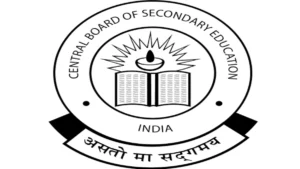Water pollution is one of the gravest problems we face today as a whole. Water pollution is serious harm to the water bodies all over the world. Unfortunately, the situation keeps getting worse even after taking a lot of measures. Government and Regulatory Organizations all over have put major policies to keep the water bodies intact, because the consequences of polluted water bodies are hazardous. To bring more clarity to this subject, Podium brings you this important article on water pollution and what are the grave consequences it brings to humanity as a whole.
You can also visit our website to know about the STEM course. Do not forget to read about What are the Effects of Air Pollution at our site
What is Water Pollution?
Water pollution is a term that is given to the occurrence of harmful chemicals, products, and materials that get added into the water bodies such as oceans, seas, lakes, and ponds through various human activities or natural activities. The waste gets dissolved in the water bodies, lies suspended in the water, or gets deposited on the bed. The quality of water suffers and leads to degradation. It harms our aquatic ecosystems and the other pollutants reach the groundwater in the process as well. That might end up in our houses as contaminated water that we use in our daily activities, including drinking. Let’s look at some of the types of water pollution.
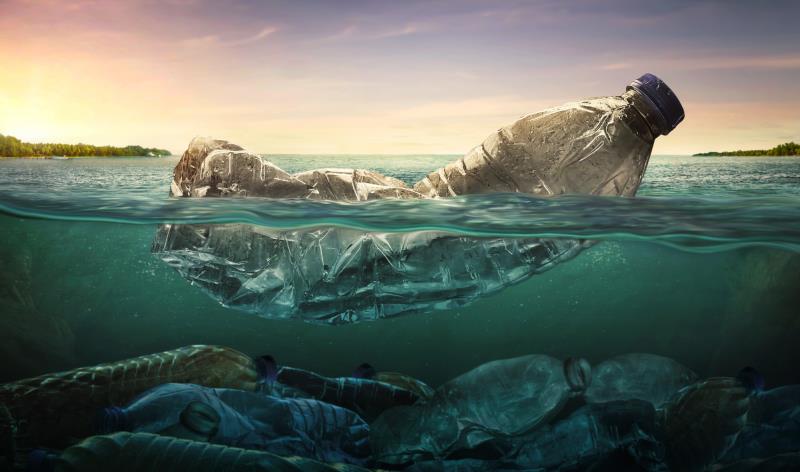
Types of Water Pollution
For the convenience of study, water pollution can be studied in the following ways–
Surface Water Pollution
Surface water consists basically of two types of water bodies, that is, fresh water and marine or saltwater.
- Fresh Water Pollution
It is the pollution of the fresh aquatic system, the surface flowing streams like rivers, live streams, seasonal streams, and also surface water bodies like ponds and lakes. Industrial waste is the biggest reason behind freshwater pollution. A good amount of untreated industrial waste is dumped right into the freshwater bodies, recording up to seventy per cent, in most developing countries. Thereby, polluting the usable water supply which is unsafe for drinking, bathing, fishing, and swimming. - Marine Water Pollution
Marine water pollution is the pollution of oceans and saline lakes. Land contributes to eighty per cent of total marine pollution.

Sub-Surface Water Pollution or Groundwater Pollution
Sub-surface water pollution includes water pollution of sub-terrain water, which is mostly used for drinking and irrigation purposes. It is also known as groundwater pollution. In other words, Sub-surface water is pollution is also known as groundwater pollution.
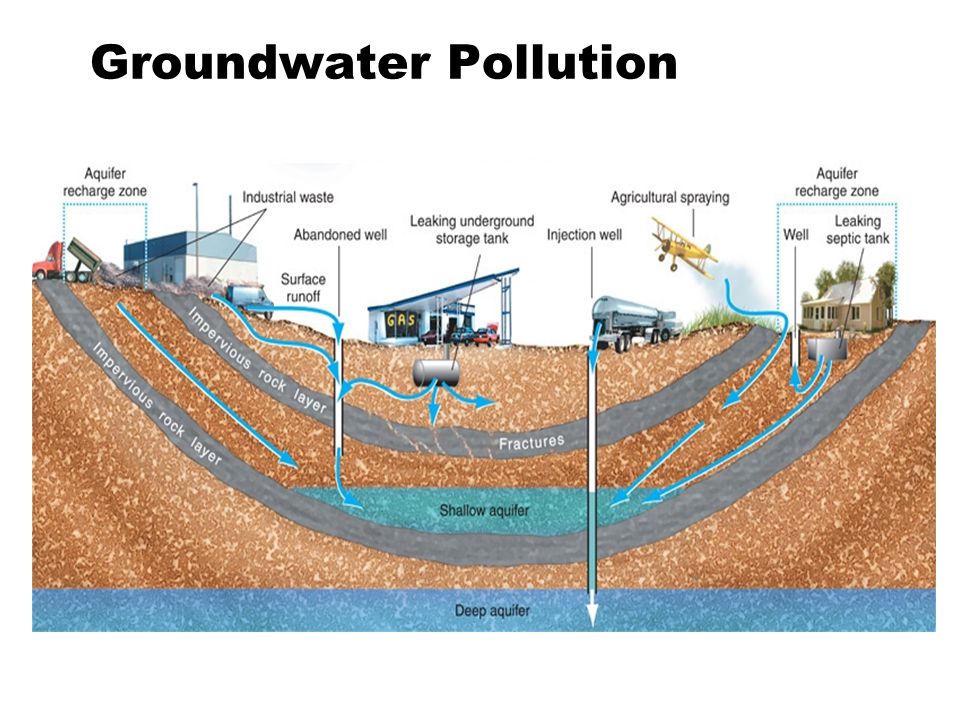
Causes of Water Pollution
Water pollution occurs for multiple reasons. It can be through natural reasons or human activities. Examples of natural causes of water pollution are animal waste, algae blooms, volcano eruptions, residue from storms and floods, etc. Not only that everyday sewage and sometimes even garbage from cities are dumped into oceans or water bodies resulting in polluting the water tremendously. Pollution from oil spills, fossil fuel combustion, chemical fertilizers and pesticides used by farmers are some other factors that lead to water pollution or contamination. Therefore, many diseases can be contracted by consuming this contaminated water. Diseases such as hepatitis, cholera, and other infectious diseases. All such diseases can be dangerous.
Factories
Most factories, industries, manufacturing units release a lot of waste directly into the nearby water bodies, resulting in polluting the water bodies. Even the smoke released by chimneys of factories too reaches the water along with polluted rain and so pollutes water. Each year the world generates about perhaps five to ten billion tons of industrial waste. Most of the waste is pumped untreated into rivers, oceans, and other water bodies. Industrial waste is the main reason behind water pollution in today’s date.
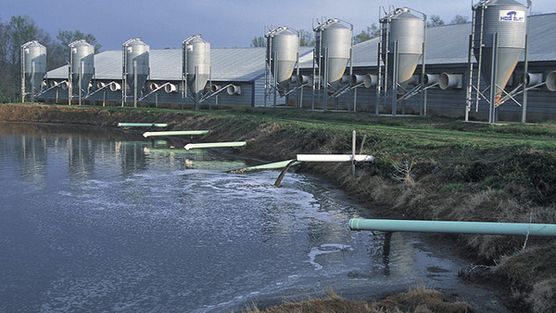
Sewage
Planet Earth is home to billions of humans and animals alike. And all of the people are generating waste every day. Handling and managing sewage and its waste is a crucial task for both the regulatory bodies and the individuals on their level. Therefore, sewage waste is most difficult to manage. So, sewage waste contaminates water and most of the countries directly release all its sewage waste into the water bodies. Water contamination due to sewage waste leads to diseases. Diseases like diarrhoea and cholera.
According to WHO (World Health Organization), water-related diseases can kill about 135 million people by 2023. In the case of developed countries, we have modern toilets that flush away the sewage waste to distant places and does not contaminate water sources near our house or our environment. But in the case of undeveloped countries, a big percentage of people don’t have access to modern flush toilets. Thus, their sewage waste pollutes the environment and water sources. Even in the case of modern and developed countries where there are modern flush toilets, sewage is disposed of at some distant place like it can be pumped into the sea or river. So it is too polluting the big water bodies. Sewage waste is pumped into the sea through big pipes untreated which contaminate the oceans and seas. Sewage and wastewater cause ocean pollution for the most part.
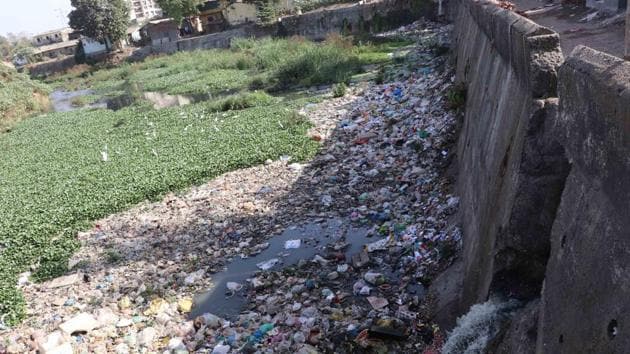
Household Waste
Every person on this Earth adds some pollutants to water. Pollutants such as utensils, clothes, and sheets are washed in every house using some kind of detergent or soap. People bathe using soaps and shampoos. All these soaps, detergents, and shampoos mix up in clean water and change the clean water into dirty water. That ultimately reaches some water bodies through long pipes and contaminates the water.
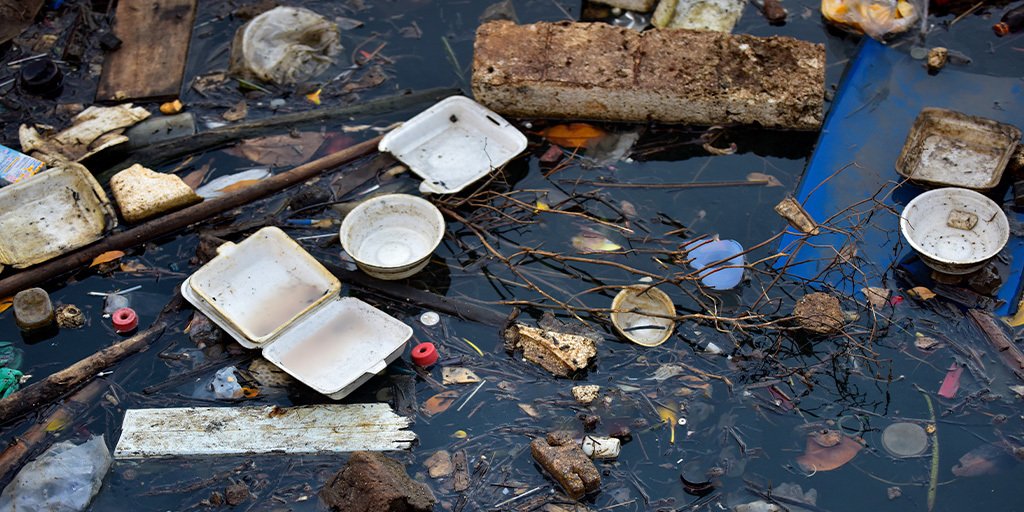
Highway Runoffs
Highways are made up of a lot of toxic chemicals. There is spilt fuel, brake fuels, other wastes, and dust from the tires. All the wastes and chemicals from the highways are washed away to the land next to roads or water bodies and contaminate them. It has been estimated that in one year, the highway runoff from a single large city leaks as much oil into our environment as a typical tanker spill.
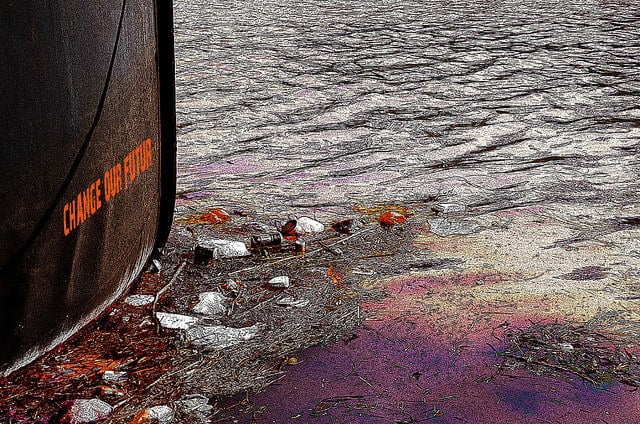
Pollution from Heavy Metals and Chemicals
Heavy metals also contribute to water pollution, metals such as mercury, lead, and cadmium. Lead was once commonly used in gasoline. Some countries now restrict the use of lead. Mercury and cadmium batteries are still being manufactured in many countries. The main sources of heavy metal pollution are mining, chromium salt manufacturing, leather tanning, lead-acid batteries, e-waste, paints, fuel combustion, and thermal power plants. The best-known example of heavy metal pollution in the oceans took place in 1938. For instance, in 1938, a factory based in Japan released an unhealthy amount of mercury metal into Minamata Bay which resulted in the deaths of many fishes and other aquatic animals. Therefore, it is strictly advised and put into order to not put industrial waste into water bodies untreated.

Oil Pollution
Our oceans and seas are a big victim of oil pollution. Mainly because a lot of oil is released into the oceans and seas due to human activities. Oil spills are a major problem because a huge quantity of oil is spilt at one location. It is also catastrophic for marine life that is many species of fish, birds, turtles, and sea mammals. However, Oil pollution is not the only result of oil spills, a lot of oil in sea waters comes from routine shipping. The oil that we use in our homes reaches seawater through wastewater drains.
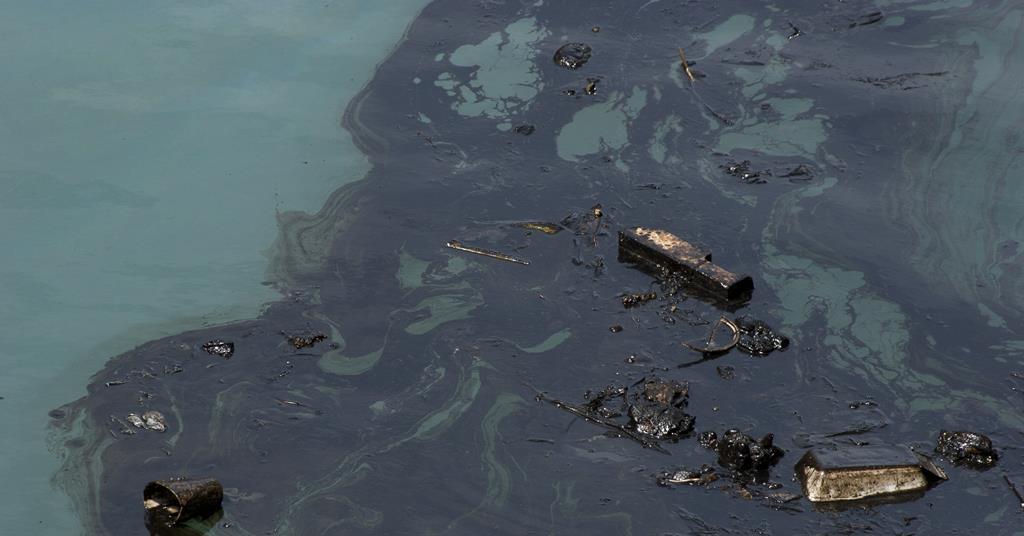
Farming
Farming includes the use of many chemicals to carry out the processes and activities. Chemicals like pesticides are used to kill pests. Insecticides for killing insects. Weedicides are there to kill unwanted plants. Above all, Fertilizers are there to make the soil more fertile. All these things contain chemicals. All these chemicals ultimately reach the groundwater and pollute it. Some of it is washed by rain and it reaches the water bodies, which results in polluting the water.

Plastic Pollution
Plastic is everywhere nowadays, in fact, plastic is one of the most commonly used products. The use of plastic is almost everywhere. One of the biggest problems that plastic poses are that it is non-biodegradable. Non-biodegradable refers to items or materials that do not break down or decompose easily as the other type of waste, so it is called non-biodegradable waste. Even when plastic breaks down, it releases toxic chemicals. So, plastic waste survives for a very long time. For example, plastic bottles, bottle caps, or any plastic waste can survive for more than 400 years. In oceans and seas, plastic waste like bottle caps keep on travelling long distances and survive for hundreds of years. Therefore, the side effect of plastic waste in water bodies is that if marine animals swallow plastic, it chokes them and the animals ultimately die.
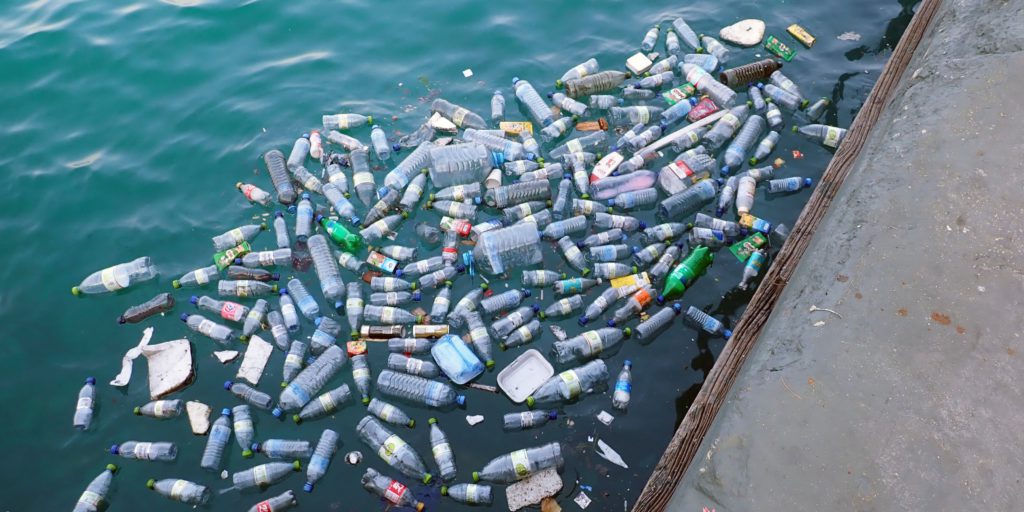
Consequences of Water Pollution
Water pollution has some very serious effects on nature and all living beings. Let’s take a look at a few of the major effects of water pollution on the environment and living organisms.
Thermal Pollution
Water pollution endangers aquatic life to its core through toxic and dangerous materials. Harmful substances are toxic to aquatic animals and it kills them. Moreover, the waste that comes from factories also increases the temperature of water in water bodies, which is called thermal pollution. An increased temperature reduces the amount of oxygen in the water. It later results in the amount of aquatic life in a water body reducing.
Thus, drinking polluted water can cause diseases like Cholera, Typhoid, Diarrhoea, Hepatitis A, Malaria, Polio, Intestinal worms, and many more.
Affects Body Organs
Contaminated water leads to serious injuries and problems to body organs such as the heart and kidneys. Harmful substances present in the water lead to various problems and are enough to injure and harm aquatic organisms. Thus, resulting in breaking a link in the food chain system of nature.
Harmful Effects of Algae in Polluted Water
Algae feed on urea, animal manure, and vegetable peelings. Polluted water on the other hand consists of all such substances. So, the growth of algae depends on the quality of water and how contaminated it is. Algae also reduce the amount of oxygen in the water. Thus, decreased oxygen levels harm other animals in the marine, or worse, kill them.
Leads to Oil Pollution
Birds that get into oil-contaminated water die from exposure to cold water and air due to their feather damage. Other animals are too affected when they consume dead fish and contaminated streams. Oil spills occur when oil tanker ships are not properly built to survive accidents at sea. In addition, the oil spills devastate the ecosystem, and also affect tourism. The coastal community rather than the people responsible for the oil spill.
Consequences of Sewage Pollution
Disposal of sewage waste and water bodies affect us all as it pollutes the water in water bodies. People who use this water to bathe or to even swim in it can fall seriously sick. Such water also poisons the shellfishes that grow near the shores along the people who eat poisoned shellfish may fall ill or worse even die.
Effects of Polluted Aquifers or Groundwater Sources
Importance of Saving Environment
Polluting the environment reduces the quality of our life. We should take every possible step to prevent the pollution of water. Let’s look at some of the ways to stop or prevent water pollution. Therefore, It is not easy to prevent or stop water pollution. We need to take several steps in different spheres.
Educating People
Making people aware of the problem that is educating people about water pollution and its effects is the first step towards solving the problem. Awareness leads to positive influence among people. Therefore, updating people regarding the problems becomes priority number one.
Legal Measures
Making laws to prevent water pollution. All countries should make strict laws that will prevent pollution. For example, sewage waste should not be allowed to drain into water bodies without its treatment. All the sewage drains should first lead to treatment plants where sewage water is treated to make it free from contaminants. After this procedure only, it should be discharged into any water body. Water pollution is transboundary. Transboundary in nature refers to waste discharged by one country that may affect the other countries also. It is because as big water bodies such as seas and oceans are common, they don’t belong to any particular country. In addition, laws are required to be made on the international or continent level.
Economic Measures: ‘Polluter Pays’ Principle
Most environmental experts agree that the best way to tackle pollution is through the ‘Polluter Pays’ principle. This means that whoever causes pollution, should pay to clean it up one way or another. For example, tanker owners should be responsible for the cost of oil spill cleanups. Shoppers should have to pay for their plastic grocery bags, to encourage recycling and minimize the use of plastic bags. No factory should be allowed to discharge its waste directly into the rivers or water bodies without treating the wastewater that is without removing the harmful substances from it.
Now let’s learn what can be the individual approach to reduce water pollution.
Individual Approach
- We should use environment-friendly detergents.
- People must avoid pouring oil in wastewater drains strictly.
- We should reduce the use of pesticides, weedicides, and fertilizers in farming areas.
- We should not pour household cleaning products like paints, motor oil, cleaning solvents, pool chemicals into the wastewater drains.
- Never flush any medicines into toilets.
- Use as less chemicals as possible in your garden.
- Community level measures help in improving water pollution situation as well, for example-
Cleaning out beaches through litter pack programmes. Just picking up waste and litter wherever it is spotted can be very useful in keeping debris and pollutants out of the water. Avoid plastic when possible. Plastic bags in oceans and seas is a major pollutant. So through these small steps, we can make a big difference. In addition, all of this will help in making our world a better place to live for us and the other organisms aside from us.
The Yamuna, India’s Most Polluted River
The Yamuna river in North India begins high up in the Himalayas and teems with life for hundreds of kilometres in the Indian capital of Delhi. It undergoes an astonishing transformation. The Yamuna enters Delhi through the point of the Wazirabad barrage. Human activities have contaminated Yamuna’s water. Heavy metals, toxic metals, pesticides, all are present in the Yamuna river. Therefore, it is not of any surprise that the Yamuna is the most polluted river in India. Oxygen levels in parts of the river are zero leading to no aquatic life in those parts of the river. India’s Supreme Court banned planting crops along the Yamuna.
It is hard to see the state of the Yamuna today. It is nothing but a tragedy. Hindus consider the Yamuna river as a goddess. Once a year tens of thousands of pilgrims gather on its banks in the towns of Mathura and Vrindavan to pray and immerse in the water believing it brings them good health and prosperity. Although, politics and the Government so far have failed to clean the Yamuna. Thus, creating a pretty ugly state of the river.
However, in Agra, residents are looking elsewhere for help. One evening they held a prayer ceremony on the riverbank to bless bricks they hope might one day be used in a barrage that would raise water levels in the city. It is quite saddening to see the Yamuna river in such a horrible state, although, with proper measures and awareness, the river can once again be free of contaminants and pollution.
Conclusion
In conclusion, with this article, we learned what is water pollution deeply and its types. Most importantly, we went through the causes of water pollution and what necessary precautions we should take on to prevent water pollution. We learned the economic measures, community-level measures, and individual-level measures that can be performed by all the individuals. Thus, creating self-awareness regarding the water pollution tragedy. However, on the other hand, we also focused on the state of the Yamuna river and how the people in those areas live. Also, another serious problem we face is air pollution, do check out our article on the same.
Frequently Asked Questions
Question 01: What are the ten examples of water pollution in 2022?
Answer: Surface Water Pollution, Nutrients Pollution, Oxygen Depleting, Groundwater Pollution, Microbiological Pollution, Suspended Matter, Oil Spillage, and Chemical Pollution.
Question 02: What are the top causes of water pollution?
Answer: The top causes of water pollution are first, rapid urban development. This refers to the industrial waste that comes with the development and building infrastructure in cities and the waste is disposed into water bodies. Secondly, improper sewage disposal. It refers to the sewage waste directly being dumped into the oceans and other water bodies, thus, contaminating it. Thirdly, the use of fertilizers and other chemicals in the process of framing pollutes the groundwater. The other causes are oil spills, chemical waste dumping, and lastly, radioactive waste discharge.
Question 03: What are the four major water pollutants?
Answer: The four major water pollutants are first, pathogens. Secondly, inorganic compounds. Thirdly, organic material. And lastly, macroscopic pollutants.
Question 04: What are the two types of water pollution?
Answer: The two types of water pollution are first, surface water pollution. Surface water pollution consists basically of two types of water bodies. That is fresh water and marine or saltwater. Secondly, sub-surface water pollution. Sub-surface water pollution includes water pollution of sub-terrain water mostly used for drinking and irrigation purposes.
Question 05: Where does India rank in terms of water quality?
Answer: India ranks at 120 out of 122 countries.
Question 06: What are the most polluted rivers in the world?
Answer:
| Rank | River | Location |
| 1 | Yamuna | India |
| 2 | Citarum River | Indonesia |
| 3 | Yellow River | China |
| 4 | Sarno River | Italy |
| 5 | Buriganga River | Bangladesh |
Share with your friends



